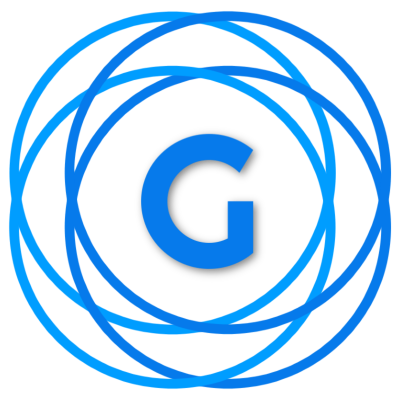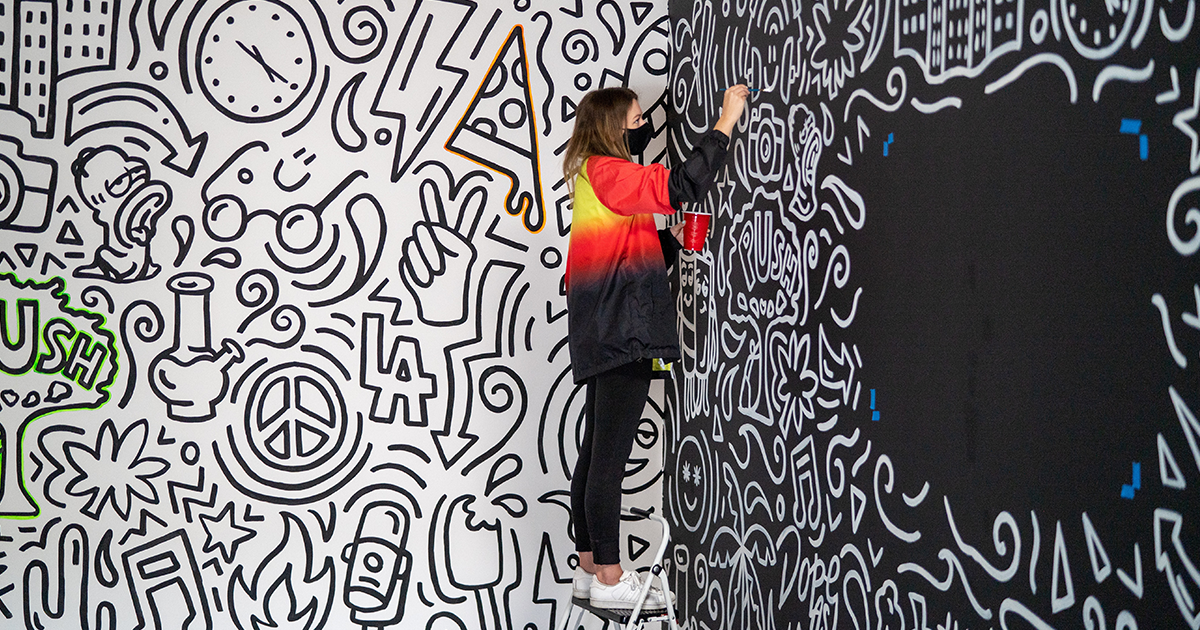How Creatives Are Using AI to Push Creative Boundaries
Unleashing the Power of AI in the Creative Realm
The synergy between human imagination and machine intelligence is unprecedentedly reshaping the creative landscape. As technology takes centre stage, AI has emerged not as a threat to human creativity but a powerful creative ally. Artificial Intelligence is now a driving force in various creative industries. AI is an excellent tool for innovative expression, from music composition and visual arts to content creation and design. Leading creatives across the globe are embracing AI tools to amplify their artistic prowess and push the boundaries of what's possible.
Music and Visual Arts
AI algorithms are becoming collaborative partners with musicians, revolutionising the creative process. AI analyses vast musical datasets identifies patterns, and collaborates with artists to compose melodies that transcend traditional genres. The fusion of human emotion and machine precision results in compositions that captivate audiences with their unique, hybrid soundscapes. Visual artists are leveraging AI to break free from conventional aesthetics. AI-assisted art is not just about automating tasks; it's about pushing the boundaries of creativity. From generating intricate patterns to offering new perspectives on form and colour, AI is a tool that empowers artists to explore uncharted territories.
The Symphonic Fusion
AI is not replacing musicians; it's augmenting their capabilities. Imagine an orchestra where human musicians and AI algorithms harmoniously collaborate. This symphonic fusion creates music that resonates profoundly, pushing the boundaries of what was once thought possible in the art of sound.
AI and the Canvas
AI algorithms in visual arts serve as co-creators, offering suggestions and generating elements that artists might not have envisioned. This collaborative process challenges artists to step outside their comfort zones, resulting in visually stunning and thought-provoking works that redefine the norms of the art world.
Expanding Insights
Enhancing Artistic Intuition: AI is an intuitive collaborator, suggesting creative elements complementing the artist's vision. This dynamic interaction fosters a unique blend of human intuition and machine-generated innovation, elevating the artistic process.
Pushing Creative Boundaries: By encouraging artists to explore unfamiliar territories, AI contributes to breaking creative boundaries. The unexpected suggestions from AI often lead to breakthroughs, transforming the canvas into a playground of limitless possibilities.
A Symphony of Perspectives: The collaboration between AI and artists creates a symphony of perspectives. This fusion challenges traditional artistic norms and invites viewers to engage with art in new and profound ways, sparking conversations about the evolving nature of creativity.
Adaptability and Evolution: AI adapts to the artist's evolving style and preferences. This adaptability ensures that the collaboration is a continuous, evolving dialogue, contributing to the artist's growth and the constant evolution of their artistic expression.
Democratising Creativity: AI in visual arts has the potential to democratise creativity by providing accessible tools for aspiring artists. The collaborative nature of AI encourages a diverse range of voices, fostering an inclusive and vibrant global artistic community.
Transformative Impact on Content Creation
Content creators employ AI algorithms to analyse trends, predict audience preferences, and generate narratives that resonate with diverse audiences. This fusion of human creativity and data-driven insights is revolutionising content creation. Imagine an AI-powered assistant that analyses vast amounts of data, identifies emerging trends, and suggests narrative elements to content creators. This collaboration between human creativity and AI insights ensures that the stories produced are compelling and resonate with the audience's preferences.
Data-Driven Storytelling: AI brings a data-driven approach to storytelling, enhancing the creator's ability to tailor content to audience preferences and helping to ensure that narratives are artistically crafted and resonate effectively with diverse audiences on a global scale.
Personalised Content: The AI storyteller adapts to individual audience preferences, enabling content creators to deliver personalised experiences. This level of personalisation fosters a deeper connection between creators and their audience, leading to increased engagement and loyalty.
Real-time Adaptation: In a rapidly changing world, the AI storyteller can adapt to current events and cultural shifts in real-time. This responsiveness allows content creators to stay relevant and contribute meaningfully to global discussions.
Diversity and Inclusion: AI's analytical capabilities can help content creators identify gaps in representation, ensuring that narratives are inclusive and representative of diverse perspectives. This gap identification promotes a more equitable portrayal of stories in the global creative landscape.
Collaborative Narratives: The collaboration between human creators and AI storytellers opens new avenues for co-authorship. A shared creative process enhances efficiency and brings forth narratives that seamlessly blend the best of human creativity and machine insights.
The Intersection of AI and Design
Designers embrace AI to streamline workflows and infuse their creations with unparalleled innovation. AI is liberating designers to focus on the essence of their craft—unleashing boundless creativity. AI in design isn't about replacing designers; it's about freeing up time and mental space for designers in the creative process. From generating multiple design options to automating repetitive tasks, AI allows designers to focus on the aspects that require human ingenuity and artistic flair
Efficiency and Iteration: AI-powered automation accelerates the design process, allowing designers to iterate and experiment more efficiently. This iterative approach fosters a culture of constant improvement, pushing designers to refine and enhance their creative outputs.
Enhanced Collaboration: Designers and AI collaborate seamlessly, creating a dynamic partnership that maximises each other's strengths—the synergy between human intuition and machine precision results in visually stunning and conceptually more decadent designs.
Adaptive Design Solutions: AI's ability to analyse vast datasets enables designers to create adaptive solutions that respond to user behaviours and preferences. This adaptive design approach ensures that the end product is not static but evolves to meet the audience's changing needs.
Innovation in User Experience: AI in design contributes to innovative user experiences by predicting user interactions and tailoring designs accordingly. This personalised approach enhances user satisfaction and engagement, setting new standards for user-centric design.
Human-Centred AI Design: The collaboration emphasises the human aspect of design, with AI as a tool to enhance the designer's creative vision. This human-centred approach ensures that technology remains a facilitator, empowering designers to create meaningful and impactful experiences.
Navigating Ethical Considerations
As we marvel at the symbiosis of AI and creativity, it's crucial to navigate the ethical dimensions of this alliance. From questions of authorship to concerns about biases ingrained in algorithms, the global discussion surrounding the ethical use of AI in creativity is more pertinent than ever. As AI becomes an integral part of the creative process, questions of authorship arise. Who owns the creations produced by AI algorithms? Navigating this ethical terrain involves establishing clear guidelines and frameworks to attribute credit and responsibility appropriately. AI systems are not immune to biases, and when applied to creative processes, these biases can inadvertently shape cultural narratives. The global discussion on ethical AI in creativity necessitates a commitment to addressing biases, ensuring that the tools augment human creativity without perpetuating harmful stereotypes.
Empowering Diverse Voices: Ethical considerations involve ensuring that AI amplifies diverse voices and perspectives in the creative process. Striving for inclusivity in AI models mitigates the risk of reinforcing existing biases and fosters a more representative and equitable creative landscape.
Transparent AI Processes: Establishing transparency in AI processes is crucial for building trust. Ethical AI practices involve making the creative process understandable and accessible, allowing creators and audiences to comprehend how AI contributes to the final output.
Continual Ethical Assessment: The ethical use of AI in creativity requires a commitment to continual assessment and improvement. Regular evaluations of AI algorithms for biases and ethical considerations ensure that the creative process evolves responsibly over time.
Community-Driven Ethical Standards: Engaging the creative community in developing ethical standards is essential. This collaborative approach ensures that ethical considerations reflect the diverse perspectives of the global creative community and are not dictated solely by technological frameworks.
Educating Creatives on Ethical AI: Fostering awareness and education around ethical AI practices is vital. Empowering creatives with the knowledge to navigate ethical considerations ensures that the global discussion on AI in creativity is informed, constructive, and beneficial for all stakeholders.
The Global Discussion: Creatives, Leaders, and Thinkers
At The Global Discussion, we believe in the power of conversations that transcend borders and perspectives. Our show/podcast dives into topics that matter, sparking discussions that resonate with creatives, leaders, and thinkers alike. As you explore the depths of deep thought in leadership, we invite you to join our global community and engage with our thought-provoking episodes. Sign up for the newsletter and join the community.
Watch or listen to our episodes on our website or find us on major podcast platforms such as Apple and Google Podcasts, Spotify, and YouTube.

